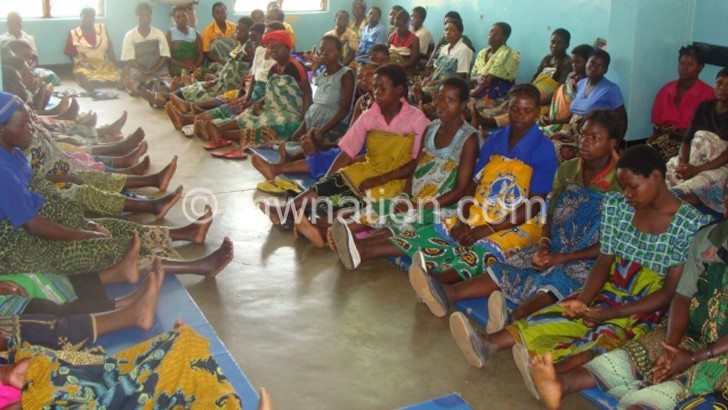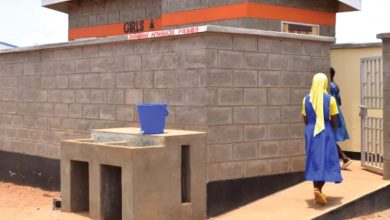A tale of two hospitals
Seven times, Baseke Mhango has opted against giving birth at the State-run Lura Health Centre in the vicinity of her home in Phoka, a mountainous terrain in Rumphi North.
For the rural woman, her decision entails walking almost 20 kilometres on hilly, narrow paths to David Gordon Memorial Hospital atop the Livingstonia Plateau.

Her choice is surprising because the mission hospital is hard to reach, but she is just one of numerous women who shun the public health facility in which they seem to have no confidence. A narrow road tears the bushes as it meanders up the scenic plateau, a six-hour perilous expedition for pregnant women.
From her home in Traditional Authority (T/A) Kachulu to the historic mission station, she sometimes pays K1 500 for public transport.
Mhango endures these long walks and extra costs just to access quality maternal health care at the hospital owned by the Church of Central Africa Presbyterian (CCAP) Synod of Livingstonia. The facility has gone three years without registering any pregnancy-related death.
“The nearby Lura hospital has inadequate staff and usually runs out of drugs,” she says.
Besides, she finds some health workers at the public health centre unfriendly in the way they handle patients.
“They take time to attend to us. Sometimes, we are never attended to whenever we visit the clinic. If one is lucky, you only get painkillers for whatever condition you are in. Some pregnant women end up delivering with the assistance of guardians,” she claims.
This could be the reason women shun the public facility. Pregnant women say they fear to go where their friends give birth in dangerous situations.
But the mission hospital comes at a cost. They pay almost K7 000 for a normal delivery and up to K30 000 for complications requiring operations.
Women in Kachulu often take advantage of an ambulance which visits the remote setting on Thursdays.
For the rest of the week, they book the referral vehicle at K10 000.
T/A Kachulu says the national campaign for safe motherhood has been compromised in his area.
“People can’t go to a government hospital which is resource constrained and at the same time can’t manage to pay for services at a mission hospital. So, they end up delivering in homes,” says the traditional leader.
The Ministry of Health has signed a service-level agreement with Christian Health Association of Malawi (Cham) facilities in which government foots bills for patients who live no more than eight kilometres from mission hospitals like David Gordon Memorial.
The agreement seeks to ensure quality maternal and neonatal services are accessible to everyone regardless of their economic status, location and distance from public hospitals which are few and far apart.
But pregnant women from communities outside the eight-kilometre radius, like Mhango and others around Lura, are supposed to pay the fees determined by the facility.
Evidence shows that the removal of user fees in Cham facilities has increased the number of patients seeking care in these facilities.
In Rumphi, the policy has exposed gaps that need to be filled if universal health coverage will be a success.
Kachulu wants government to revise the mapping as some women outside the eight-kilometre radius continue being neglected because hospitals are far apart, underfunded and ill-equipped.
He urges government to equip its hospitals with enough personnel and medical supplies to restore public confidence.
Rumphi district health officer Dr Stephen Macheso says his office is reviewing the agreement with Livingstonia Synod given the challenges in the hilly area. The new agreement will also be applicable to the synod’s health centres at Luwuchi and Mlowe.
“But we will have to conduct an inquiry if the allegations against Lura are true,” says Macheso.
At least 263 newborns and 35 mothers in Rumphi have died in the past three years.
But annual statistics show a decrease from 35 maternal deaths in 2014 to 12 in 2015 and eight last year. Similarly, 112 babies died three years ago, 87 in 2015 and 64 last year.
“It is worrisome for a woman to die while giving life,” says Macheso. “But the majority of 18 health facilities in the district are hard-to-reach, so if we are talking about safe motherhood, we need also to look at the referral system. How many hours will it take to refer a mother?”
Sometimes it takes two to three hours, he says. These issues affect us in delivery of maternal and neonatal health services in the district,” he says.
The district has lobbied for more ambulances to be placed in strategic places, especially Chitimba and Hewe, to ease the problem.
An analysis of the proportion of Malawi’s population living within an eight-kilometre radius of a health facility shows that there are certain districts that are better served than others.
Likoma Island has no government facility and all are served by St Peters Anglican Hospital. In Chitipa, 51 percent of the population live more than 8km from a health facility. By contrast, in Chiradzulu, Blantyre, Mulanje and Zomba districts, less than five percent of the population reside more than 8km from a health facility.
Besides increasing geographical coverage, Livingstonia Synod moderator, Reverend John Gondwe, suggests that government needs to come up with a population policy to limit the number of children per family.
“Malawi doesn’t have a clear population policy that determines the number of children per family. As it is, families can choose to have as many children as they want. This exerts pressure on health services and other social services,” he says.




